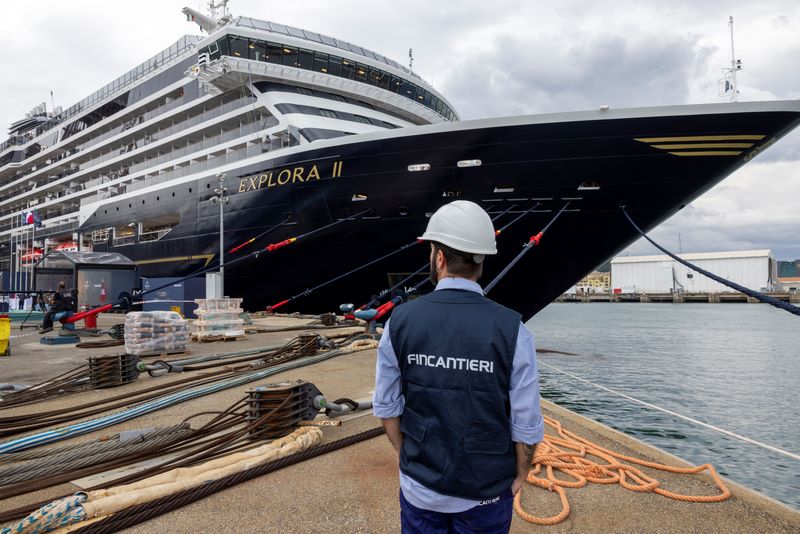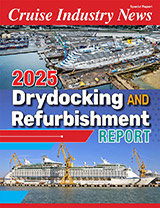“The cruise market has bounced back and with all the orders that have come recently, shipowners, especially startup ventures, may find it difficult to find available building slots,” said Luigi Matarazzo, general manager of the merchant ships division of Fincantieri.
“We are very proud of our orderbook which this year added three new very large ships for Carnival Cruise Line, two ships for Crystal Cruises and eight for Norwegian Cruise Line Holdings.
“Our customers include all the major cruise companies and a range of ships. We are covering the contemporary, premium and luxury segments.”
The work is structured out of the headquarters in Trieste, Matarazzo explained, with the engineering department, design, purchasing and project management.
“That means the ship designs are developed in Trieste and from there we build the ships in the six yards that we have in Italy, four of which are totally dedicated to cruise ships from beginning to end – in Monfalcone, Marghera, Sestri and Ancona. And we have two more yards in Palermo and Castellammare di Stabia, which support the main yards by building floating sections. This helps to reduce the construction time as we can build sections from 6,000 to 11,000 tons that we float to the main yards for completion and outfitting. We can also use our subsidiary Vard.”
Matarazzo said that the industry is in a transition period, with new technologies and fuels being introduced, but that there is no system today that can replace conventional propulsion. But new technologies are being developed and their application to new ships will depend on their size and operating profile.
“So, at this moment we are building ships that will use LNG, ships that will be methanol-ready, and we are testing hydrogen fuel cells.”
The IMO emissions target is for net zero by 2050; Fincantieri has set a more ambitious target in its business plan for net zero emissions by 2035.
Explained Matarazzo: “We are looking at the next few years as a transition period. What I see initially are hybrid solutions. Working with Viking, for example, their vessels are in the 50,000- to 60,000-gross ton range where we can probably combine two solutions: the traditional powerplant and a hydrogen fuel cell in the range of five to six megawatts. That would be sufficient to run the hotel load when the ship is in port and also allow it to sail into the Norwegian Heritage fjords at low speed, seven to nine knots, with zero emissions.
“Viking installed a small 100-kilowatt fuel cell fed by hydrogen generated onboard through an electrolytic process on the Viking Neptune, the ninth ship delivered to this shipowner, to test the system and better understand the operating and safety aspects,” Matarazzo said.
“This was the first step that will bring us to the second level, to one megawatt, then two megawatts. We are aiming at increasing the power to match the hotel load.”
Matarazzo said he also thinks there are still opportunities to improve fuel efficiencies in parallel with green technologies. He said that the Sun Princess, which was delivered by Fincantieri earlier this year, is a dual-fuel vessel with 4,000 cubic meters of LNG onboard as her primary fuel. She also has more than 100 improvements in terms of fuel efficiencies from simple things like LED lighting to air lubrication.
“With the LNG plus all the energy efficiencies, we have been able to reduce fuel consumption and emissions about 50 percent below the IMO target,” Matarazzo said.
“There are many initiatives that we continue to study, develop and implement.”
Designing ships that may be built 10 years from now, Matarazzo said Fincantieri has to make sure they are ready for future fuels. That means designing spaces for insulation and ventilation, preparing ships for alternative fuels and with flexibility to accommodate new technologies.
“We understand our customers’ needs,” Matarazzo said. “As a shipbuilder we will give all the support we can until the ship is built and delivered, and I can guarantee that the ships we deliver will have the flexibility to accommodate new technologies.”
Excerpt from the Cruise Industry News Quarterly Magazine Fall 2024




